May 5, the Cruise Begins
After a breakfast in our room of coffee with cheese and a baguette we’d bought on Moorea, we caught a cab to the dock at 11:00, to be at the dock for our assigned boarding time. It was raining, sometimes heavily.
Throughout the boarding process, and once we boarded the ship masks were required. At the dock we went to a tent where we dropped off our luggage. It was tagged for our stateroom and were assigned a number for the next step. We then proceeded to a processing area where each boarding party (in other words, each couple) were tested for COVID. It turns out that a few couples tested positive, and had to quarantine in Tahiti. There were a few people who then did finally join us near the end of the cruise. After being tested we simply walked to the ship. Our luggage was waiting at the entrance to our quarters.
We noticed a total lack of fanfare compared to other Windstar boardings. Still we met some interesting and pleasant people while completing the boarding steps (deciding on dinner venues, getting our ID cards, etc.) There were 114 passengers aboard, four from Canada, the rest from the US.
The ship finally left port at around 6:00 pm and spent the next day at sea, heading for our first port of call, the atoll Fakarava, in the Tuamotu Islands. This extended itinerary is a bit unusual. Windstar usually cruises just the Society Islands, nearer to Tahiti.
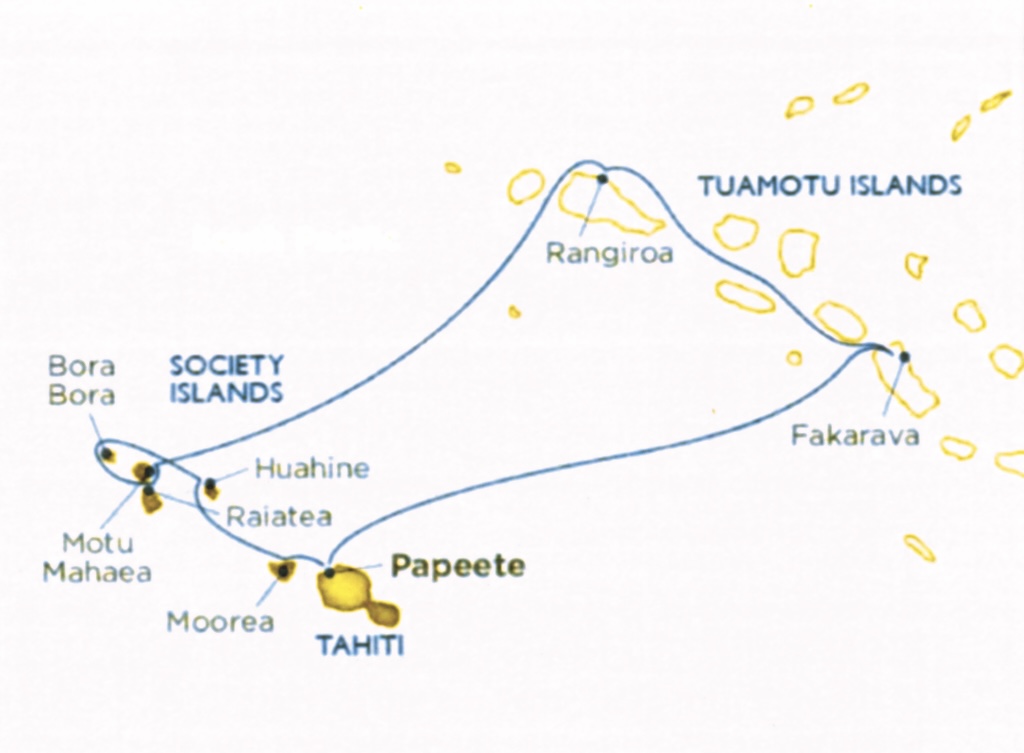
May 7, Fakarava
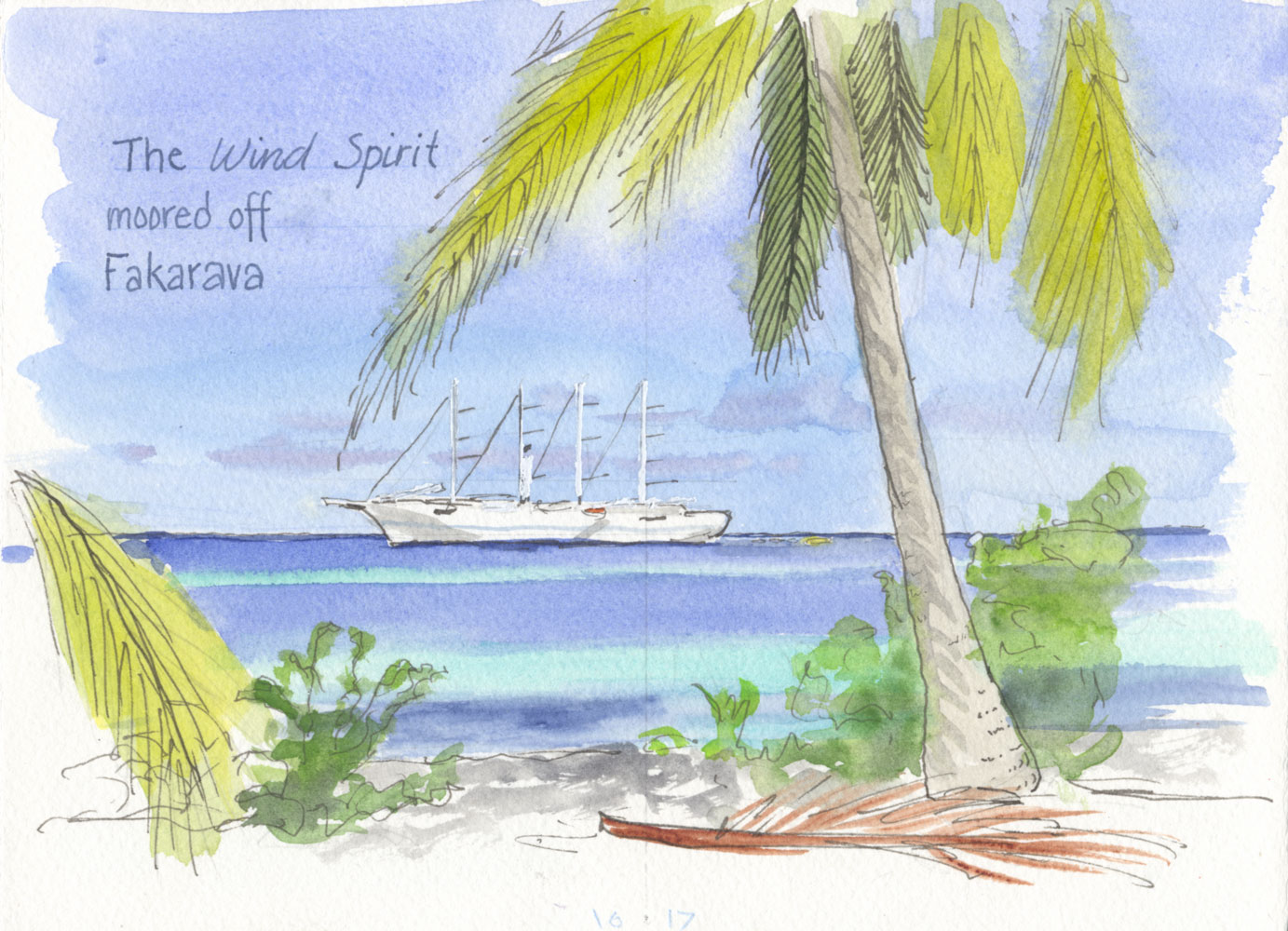
This was my first South Pacific atoll. From a distance it looked like a thick, fuzzy green piece of yarn, stretched along the horizon.

As we got closer we could see details, including its signature lighthouse, built in the 19th century and now abandoned.

In a pattern that we repeated throughout the cruise, I’d take a swim with Mary off the back of the ship, then go ashore while she stayed in the water. Sometimes she didn’t come ashore at all. You may have noticed a string of tiny shapes astern of the ship, as seen from shore. This was the floats that were set out, tethered to its water-sports platform.

Meanwhile those of us who went ashore were greeted by a band playing under a “Welcome to Fakarava” sign.
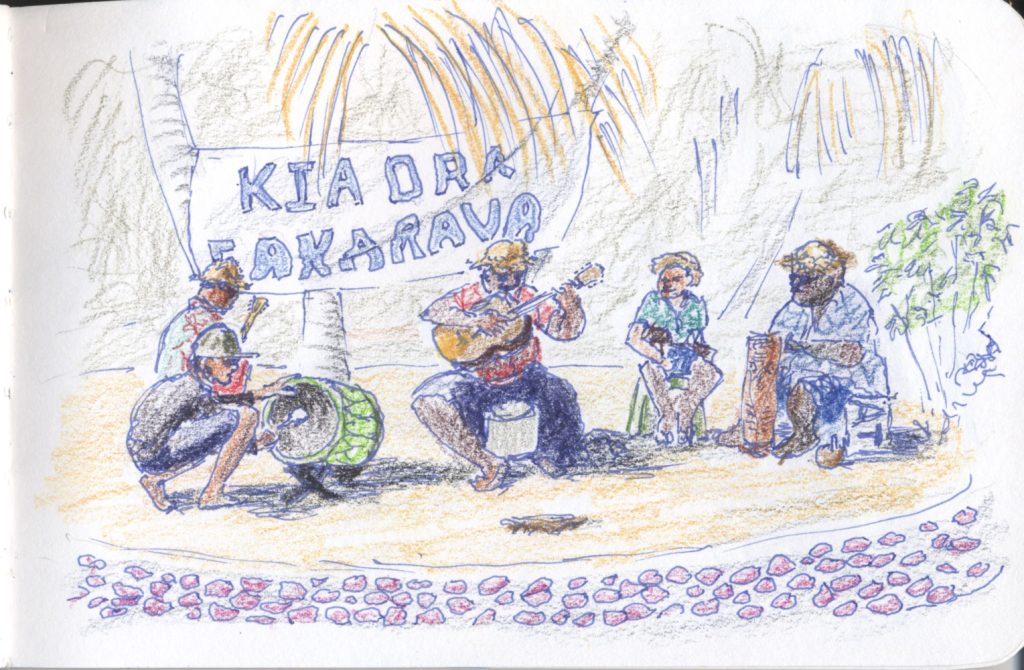
It was hot ashore, so I took two water bottles with me as I walked along the shore. That was just enough to get me to the lighthouse and back.
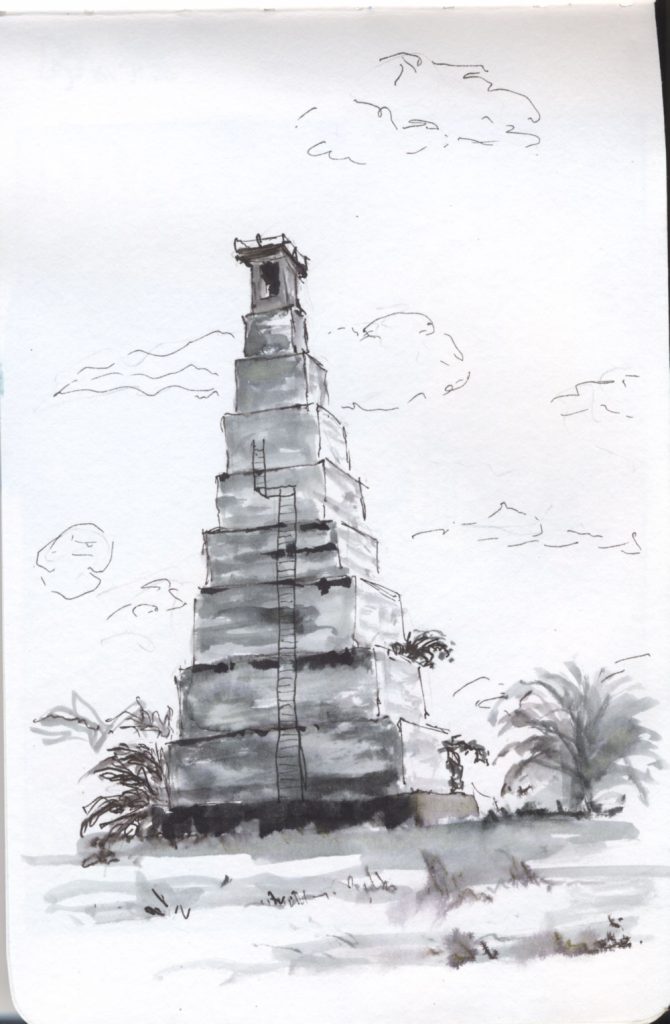
Along the way I came across a group of houses—a community?—with a sign in front saying RALENTISSEZ. Cheerful place: the buildings were painted a coral pink, with light turquoise roofs, and the place was festooned with the colorful round floats the oyster cultivators use to float and mark their oyster cages. I expect the people there were in the black pearl business.
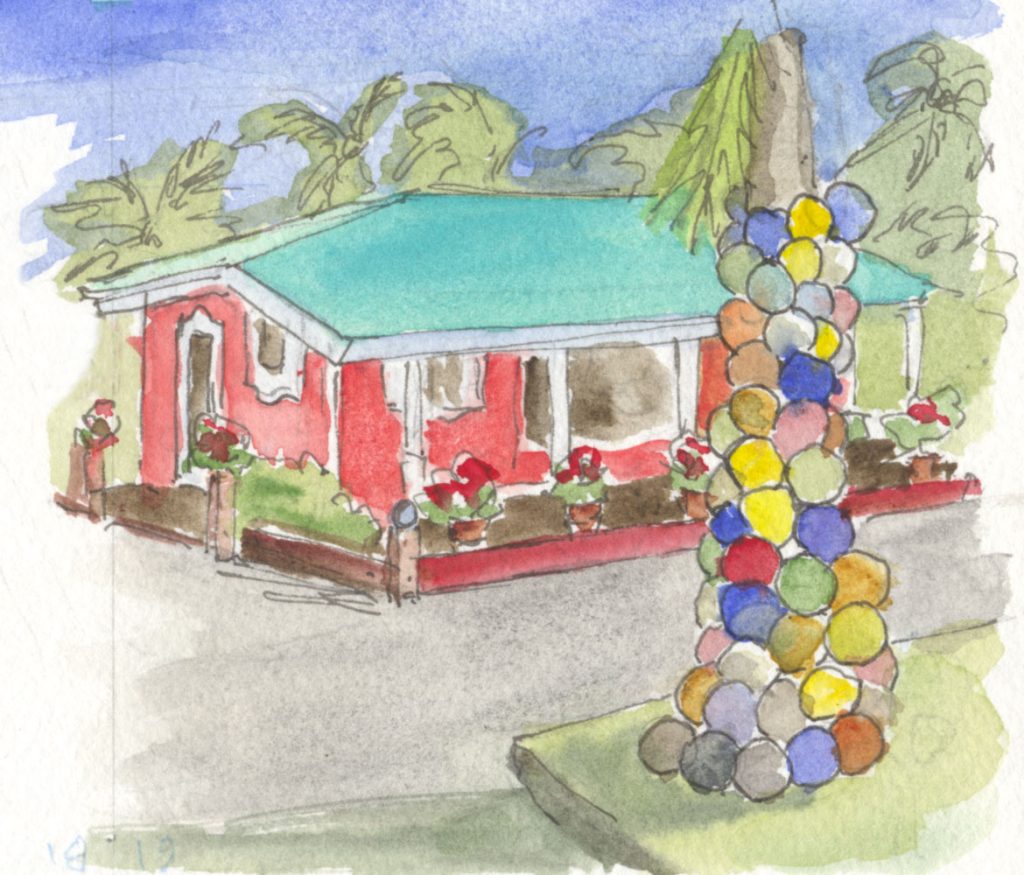
The entire population of Fakarava totals 845, so it was surprising to me that the road that encircled it was so well made and maintained. I was impressed with the town, which consists of a market—about the size of a truck stop’s store in the US—, an elementary school, and some government buildings, was so tidy and well kept.
That should not have been such a surprise, I suppose, as it is one of the most popular diving destinations in the world, having been designated a biosphere reserve by UNESCO in 1977.
